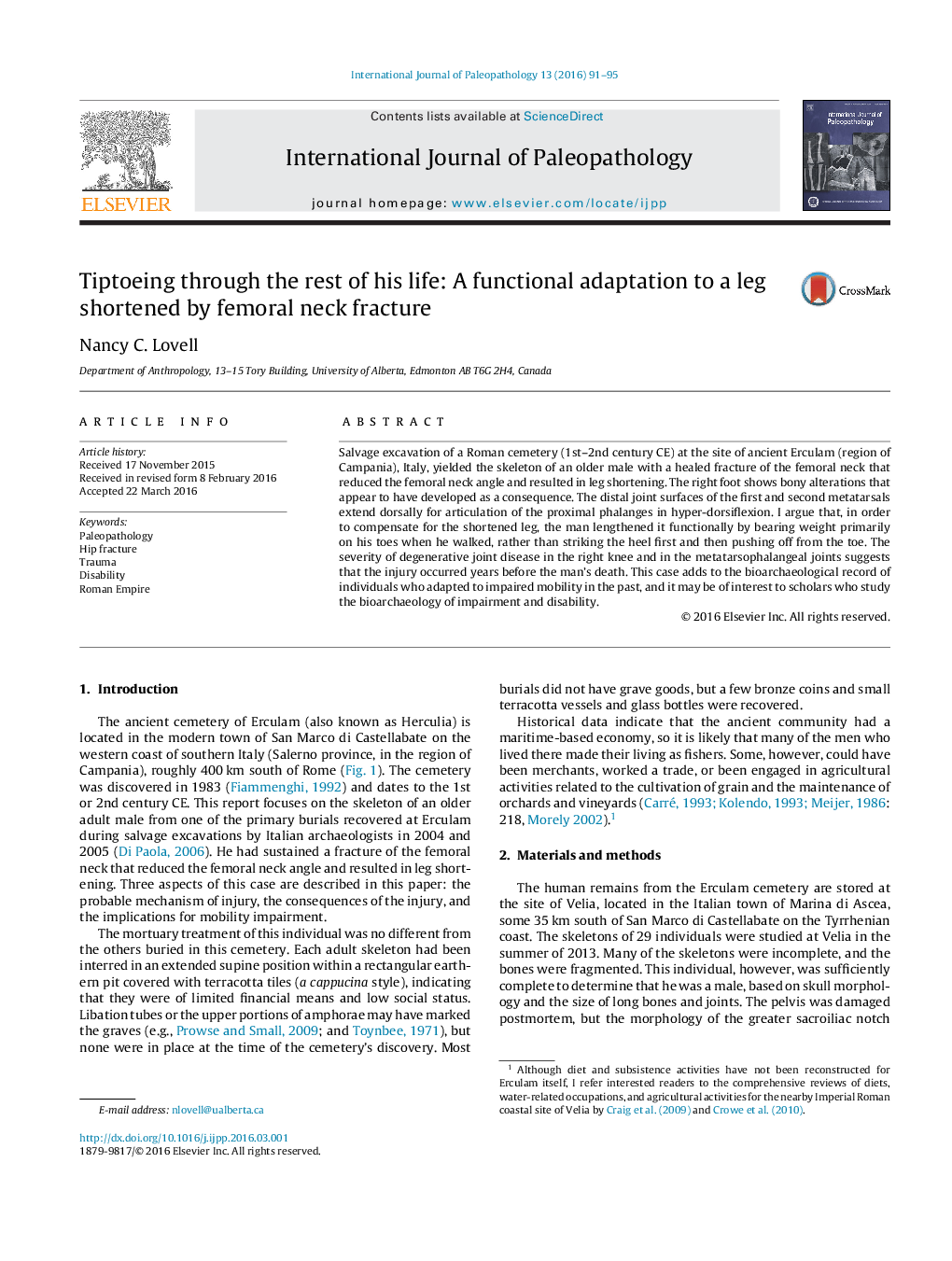| Article ID | Journal | Published Year | Pages | File Type |
|---|---|---|---|---|
| 6554830 | International Journal of Paleopathology | 2016 | 5 Pages |
Abstract
Salvage excavation of a Roman cemetery (1st-2nd century CE) at the site of ancient Erculam (region of Campania), Italy, yielded the skeleton of an older male with a healed fracture of the femoral neck that reduced the femoral neck angle and resulted in leg shortening. The right foot shows bony alterations that appear to have developed as a consequence. The distal joint surfaces of the first and second metatarsals extend dorsally for articulation of the proximal phalanges in hyper-dorsiflexion. I argue that, in order to compensate for the shortened leg, the man lengthened it functionally by bearing weight primarily on his toes when he walked, rather than striking the heel first and then pushing off from the toe. The severity of degenerative joint disease in the right knee and in the metatarsophalangeal joints suggests that the injury occurred years before the man's death. This case adds to the bioarchaeological record of individuals who adapted to impaired mobility in the past, and it may be of interest to scholars who study the bioarchaeology of impairment and disability.
Related Topics
Life Sciences
Biochemistry, Genetics and Molecular Biology
Physiology
Authors
Nancy C. Lovell,
